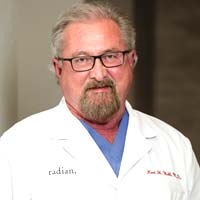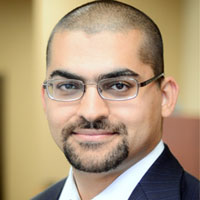Hair Transplant Institute of Miami Helps Tackle the Hair Loss Challenge
Lifestyle, health, heredity and other factors like pollution, chemically treated water, medication, treatments and so on result in hair loss in both men and women. To give them relief the Hair Transplant Institute of Miami unveiled 3 effective hair restoration procedures encompassing prescription medicines, low level laser therapy (LLLT), and advanced FUE hair transplant procedures.
Hair loss dilemma is not gender, race, region, climate or age specific. It can afflict anyone depending on various factors. Irrespective of cause the urgent need is to find a solution. The Hair Transplant Institute of Miami recommends surgical as well as non-surgical hair restoration procedures that promise good results.
A major non-surgical treatment is the use of prescription hair loss medications like Minoxidil which rectifies thinning or balding hair conditions. Minoxidil, a topical treatment is prescribed by its brand name Rogaine which helps in the fast growth of hair giving visible results.
Finasteride or Propecia is prescribed in tablet form for men fighting against hair loss. Besides helping prevent further hair loss these medicines also induce production of new hair to cover-up for receding hairlines and loss of hair at the crowns.
However women may not be able to use Rogaine as it is difficult to administer daily. Porpecia is also not popular with women.
Surgeons at the Hair Transplant Institute also recommend a surgical procedure to take quick action against hair loss. Follicular Unit Extraction (FUE) is one such technique which is minimally invasive and gives a natural look with almost no pain, visible marks or scars.
For those men and women who prefer a non-surgical hair restoration procedure and no medications, Low Level Laser Therapy (LLLT) is the best alternative.
LLLT uses FDA approved type IIIa lasers that can stimulate blood flow to the hair follicles. The revitalized hair follicles can now grow new hair like before thereby preventing thinning of hair and a balding scalp. The blood flow actually supplies more oxygen and nutrients to the hair follicles to induce natural hair growth in the otherwise inactive hair follicles.
The Hair Transplant Institute of Miami uses the LaserCap device that fits conveniently on the head which can be concealed under any head gear. This delivers unhindered treatment allowing patients to undergo treatment while they go about their work. A personal LaserCap LLLT device is given to patients following a consultation process. It has to be used 3 times a week to give optimum results. LaserCap is considered the best treatment option by most men and women, said doctors at the Miami Institute.
To benefit from the many treatments at the Hair Transplant Institute of Miami patients are requested to access the Institute website for hair loss evaluation and consultation appointments. The institute’s Travel Program comprising of hotel stay and discounts will benefit out-of-state residents.
The needs and personal expectations of patients is analyzed by Dr. Paul Rose and Dr. Bernard Nusbaum, surgeons at the Hair Transplant Institute to recommend the best method that will suit the recipient of the hair transplant procedure.
Hairfear
Frequently asked questions about hair transplant procedures
How much does a hair transplant cost?
Hair transplants can vary in price based off of the area in the world that you are interested in getting a hair transplant as well as the size of the area where you may need a hair transplant. Experienced doctors in the United States will often charge some of the highest prices for a hair transplant worldwide and this is why so many travelers make the move to other parts the world like Turkey, India, Thailand, Mexico...etc for their hair transplants.
Will a hair transplant hurt?
Although hair transplants may look like a particularly
unpleasant or painful experience is actually very little discomfort involved
with the surgery itself. Hair transplants are always done under an anesthetic so there's absolutely zero pain during the treatment itself. Many people actually relate the process as being very similar to going to the dentist for filling or root canal. Mild pain can persist over the course of postop treatment but he generally just resumes for a few days.
Who can deliver the best surgery?
It's usually best to consider working with surgeons who have and IAHRS certification or international alliance of hair restoration surgeons recognition. IAHRS can often deliver recommendations for the best surgeons in each particular area.
Is this scarring noticeable?
Any type of hair transplant will require the use of incisions throughout the scalp. There can also sometimes be a small scar from the donor area towards the back of the scalp. Asking to look at photos of the surgeon's previous work will help you to see roughly how bad the scarring could be. In most cases an experienced professional can limit the look of scarring and noticeable marks from the surgery.
How long does it take for the hair to grow?
In most cases hair growth will start within eight months and you can start to see a full effect from the hair transplant after a full year. The initial signs of growth can usually start between 3 to 4 months after the surgery.
Are the results permanent?
The hair follicles that are transplanted are generally the ones which are genetically resistant against the symptoms of baldness. As long as you receive hair loss treatment later in your life after the symptoms of balding have started to subside, you can have a better chance at permanent results.
While everyone know you've had surgery?
If you want to limit the chance that people may find out about your surgery it's important to give at least three weeks of healing as the surgical area will be affected and red just after surgery. After around a month of healing it can look far less noticeable. You could consider wearing a hat while time passes or opting for some extra time off if possible.
How long should I rest after surgery?
It's recommended to rest for at least a few days after surgery so that your body can recover. Trenton to over exert yourself and limit sexual activity, running in the gym for around 10 days after surgery.
Is it possible to lose more hair as a result of surgery?
There is always a chance of shock loss which happens when the hair is weak and miniaturizing after the surgery. As long as the surgeon is choosing the correct hair follicles and performing the surgery well it's possible to minimize the chance of this happening however.
Will I need another hair transplant?
The need for another transplant really depends on the individual. With a solid foundation surgery and working to potentially bolster results with drug therapy, you can improve the stability of the hair that was transplanted as well as prevent further loss. Getting a hair transplant early
on in your 20s or early on in life could lead to needing long-term transplants as hair loss can be progressive.







